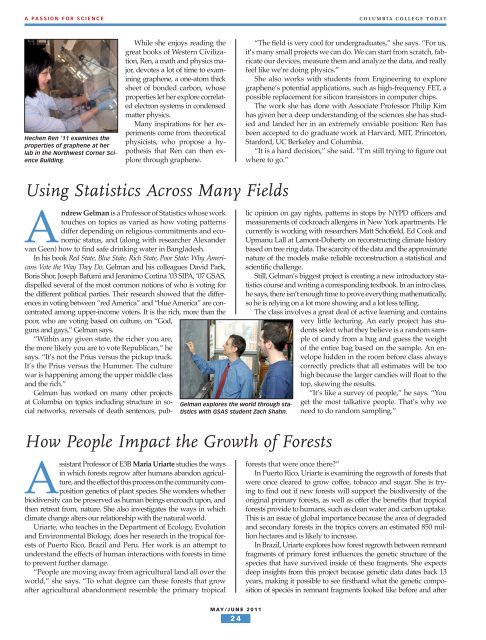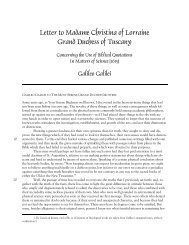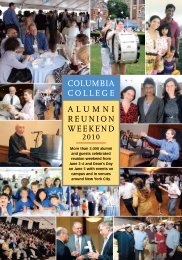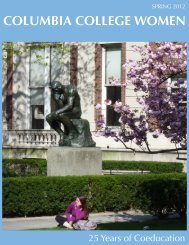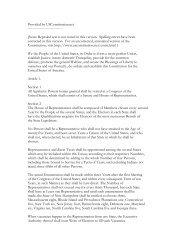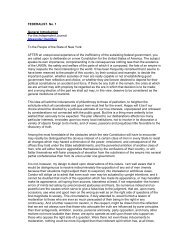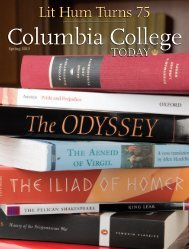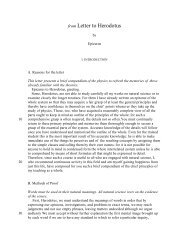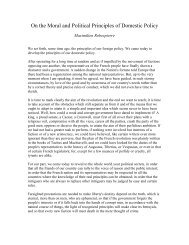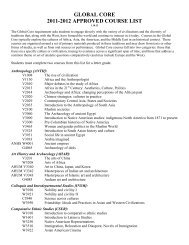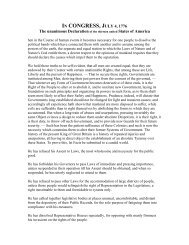A Passion for Science - Columbia College - Columbia University
A Passion for Science - Columbia College - Columbia University
A Passion for Science - Columbia College - Columbia University
Create successful ePaper yourself
Turn your PDF publications into a flip-book with our unique Google optimized e-Paper software.
A PASSION FOR SCIENCE <strong>Columbia</strong> CollEgE Today<br />
Hechen Ren ’11 examines the<br />
properties of graphene at her<br />
lab in the Northwest Corner <strong>Science</strong><br />
Building.<br />
Andrew gelman is a Professor of Statistics whose work<br />
touches on topics as varied as how voting patterns<br />
differ depending on religious commitments and economic<br />
status, and (along with researcher Alexander<br />
van Geen) how to find safe drinking water in Bangladesh.<br />
In his book Red State, Blue State, Rich State, Poor State: Why Americans<br />
Vote the Way They Do, Gelman and his colleagues David Park,<br />
Boris Shor, Joseph Bafumi and Jeronimo Cortina ’03 SIPA, ’07 GSAS,<br />
dispelled several of the most common notions of who is voting <strong>for</strong><br />
the different political parties. Their research showed that the differences<br />
in voting between “red America” and “blue America” are concentrated<br />
among upper-income voters. It is the rich, more than the<br />
poor, who are voting based on culture, on “God,<br />
guns and gays,” Gelman says.<br />
“Within any given state, the richer you are,<br />
the more likely you are to vote Republican,” he<br />
says. “It’s not the Prius versus the pickup truck.<br />
It’s the Prius versus the Hummer. The culture<br />
war is happening among the upper middle class<br />
and the rich.”<br />
Gelman has worked on many other projects<br />
at <strong>Columbia</strong> on topics including structure in social<br />
networks, reversals of death sentences, pub-<br />
While she enjoys reading the<br />
great books of Western Civilization,<br />
Ren, a math and physics major,<br />
devotes a lot of time to examining<br />
graphene, a one-atom thick<br />
sheet of bonded carbon, whose<br />
properties let her explore correlated<br />
electron systems in condensed<br />
matter physics.<br />
Many inspirations <strong>for</strong> her experiments<br />
come from theoretical<br />
physicists, who propose a hypothesis<br />
that Ren can then explore<br />
through graphene.<br />
Using Statistics Across Many Fields<br />
Assistant Professor of E3B Maria uriarte studies the ways<br />
in which <strong>for</strong>ests regrow after humans abandon agriculture,<br />
and the effect of this process on the community composition<br />
genetics of plant species. She wonders whether<br />
biodiversity can be preserved as human beings encroach upon, and<br />
then retreat from, nature. She also investigates the ways in which<br />
climate change alters our relationship with the natural world.<br />
Uriarte, who teaches in the Department of Ecology, Evolution<br />
and Environmental Biology, does her research in the tropical <strong>for</strong>ests<br />
of Puerto Rico, Brazil and Peru. Her work is an attempt to<br />
understand the effects of human interactions with <strong>for</strong>ests in time<br />
to prevent further damage.<br />
“People are moving away from agricultural land all over the<br />
world,” she says. “To what degree can these <strong>for</strong>ests that grow<br />
after agricultural abandonment resemble the primary tropical<br />
Gelman explores the world through statistics<br />
with GSAS student Zach Shahn.<br />
How People Impact the Growth of Forests<br />
MAY/JUNE 2011<br />
24<br />
“The field is very cool <strong>for</strong> undergraduates,” she says. “For us,<br />
it’s many small projects we can do. We can start from scratch, fabricate<br />
our devices, measure them and analyze the data, and really<br />
feel like we’re doing physics.”<br />
She also works with students from Engineering to explore<br />
graphene’s potential applications, such as high-frequency FET, a<br />
possible replacement <strong>for</strong> silicon transistors in computer chips.<br />
The work she has done with Associate Professor Philip Kim<br />
has given her a deep understanding of the sciences she has studied<br />
and landed her in an extremely enviable position: Ren has<br />
been accepted to do graduate work at Harvard, MIT, Princeton,<br />
Stan<strong>for</strong>d, UC Berkeley and <strong>Columbia</strong>.<br />
“It is a hard decision,” she said. “I’m still trying to figure out<br />
where to go.”<br />
lic opinion on gay rights, patterns in stops by NYPD officers and<br />
measurements of cockroach allergens in New York apartments. He<br />
currently is working with researchers Matt Schofield, Ed Cook and<br />
Upmanu Lall at Lamont-Doherty on reconstructing climate history<br />
based on tree ring data. The scarcity of the data and the approximate<br />
nature of the models make reliable reconstruction a statistical and<br />
scientific challenge.<br />
Still, Gelman’s biggest project is creating a new introductory statistics<br />
course and writing a corresponding textbook. In an intro class,<br />
he says, there isn’t enough time to prove everything mathematically,<br />
so he is relying on a lot more showing and a lot less telling.<br />
The class involves a great deal of active learning and contains<br />
very little lecturing. An early project has students<br />
select what they believe is a random sample<br />
of candy from a bag and guess the weight<br />
of the entire bag based on the sample. An envelope<br />
hidden in the room be<strong>for</strong>e class always<br />
correctly predicts that all estimates will be too<br />
high because the larger candies will float to the<br />
top, skewing the results.<br />
“It’s like a survey of people,” he says. “You<br />
get the most talkative people. That’s why we<br />
need to do random sampling.”<br />
<strong>for</strong>ests that were once there?”<br />
In Puerto Rico, Uriarte is examining the regrowth of <strong>for</strong>ests that<br />
were once cleared to grow coffee, tobacco and sugar. She is trying<br />
to find out if new <strong>for</strong>ests will support the biodiversity of the<br />
original primary <strong>for</strong>ests, as well as offer the benefits that tropical<br />
<strong>for</strong>ests provide to humans, such as clean water and carbon uptake.<br />
This is an issue of global importance because the area of degraded<br />
and secondary <strong>for</strong>ests in the tropics covers an estimated 850 million<br />
hectares and is likely to increase.<br />
In Brazil, Uriarte explores how <strong>for</strong>est regrowth between remnant<br />
fragments of primary <strong>for</strong>est influences the genetic structure of the<br />
species that have survived inside of these fragments. She expects<br />
deep insights from this project because genetic data dates back 13<br />
years, making it possible to see firsthand what the genetic composition<br />
of species in remnant fragments looked like be<strong>for</strong>e and after


